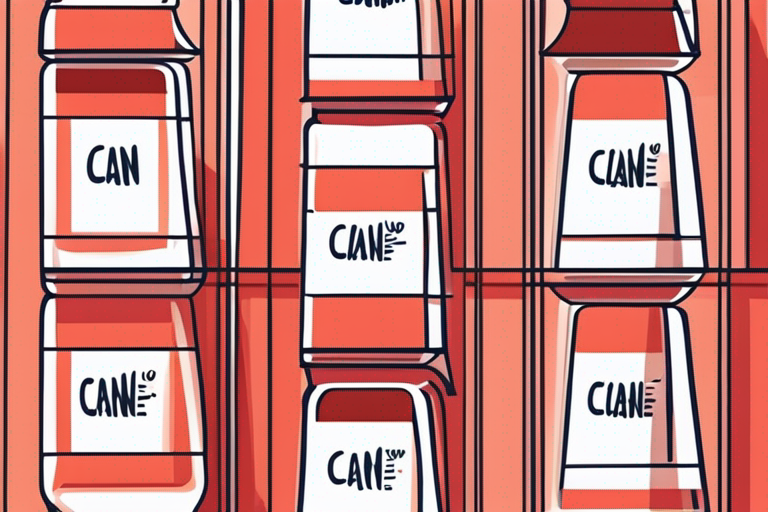
Can I Eat Cream Cheese After the Expiration Date?
Get Your Free Food Safety Cheat Sheet
30 most common foods with instant answers. Print it and stick it on your fridge—completely free!
# Can I Eat Cream Cheese After the Expiration Date?
Cream cheese is a popular dairy product known for its creamy texture and versatile use in both sweet and savory dishes. However, like all perishable foods, cream cheese comes with an expiration date. But what happens if you find a forgotten container of cream cheese in the back of your fridge past its expiration date? Can you still safely consume it? In this blog post, we will explore the safety of eating cream cheese after the expiration date and provide you with practical tips on how to handle expired cream cheese.
## Understanding Expiration Dates on Cream Cheese
Before delving into whether you can eat cream cheese past its expiration date, it's essential to understand the different types of dates you may find on cream cheese packaging:
### Sell-By Date
The sell-by date is a guide for retailers indicating how long they can display the product for sale. It is not an indicator of the product's safety but rather its quality.
### Best-By Date
The best-by date suggests when the cream cheese may start to lose its optimal flavor and texture. Consuming the product after this date may not be harmful, but the quality may be compromised.
### Expiration Date
The expiration date is the date after which the manufacturer does not guarantee the product's quality or safety. It is recommended to consume the product before this date for the best experience.
## Can You Eat Cream Cheese After the Expiration Date?
While the expiration date on cream cheese serves as a guideline for freshness and quality, it does not necessarily mean that the product is unsafe to consume immediately after that date. Here are some factors to consider when deciding whether to eat cream cheese past its expiration date:
### Storage Conditions
The way cream cheese is stored can significantly impact its shelf life. If the cream cheese has been consistently refrigerated at the proper temperature (below 40°F or 4°C), it is more likely to remain safe for consumption even after the expiration date.
### Visual and Olfactory Inspection
Before consuming cream cheese past its expiration date, inspect it visually and by smell. If you notice any signs of mold, unusual discoloration, off-smells, or an altered texture, it is best to discard the cream cheese.
### Taste Test
If the cream cheese appears normal, you can perform a small taste test to check for any off-flavors or sourness. Trust your senses; if the taste seems off, it's better to discard the cream cheese.
## Real-Life Scenarios: When You Might Encounter Expired Cream Cheese
Imagine this: It’s late at night, and you’re craving a midnight snack. You rummage through your fridge and find that half-open tub of cream cheese tucked away in the back. You check the date and find it expired three weeks ago. Now, what do you do?
In another scenario, let’s say you’re in the middle of preparing a family gathering and realize that the cream cheese you bought for your famous cheesecake is past the expiration date. You’re pressed for time, and running to the store isn’t an option. Do you risk using it?
These real-life situations highlight the common dilemma many face when it comes to expired cream cheese. Understanding how to assess its safety can help you make an informed decision in these moments.
## Tips for Safely Consuming Expired Cream Cheese
If you decide to consume cream cheese after the expiration date, follow these tips to minimize any potential risks:
1. **Check for Signs of Spoilage:** Inspect the cream cheese for mold, unusual odors, or texture changes before consuming it.
2. **Consume Promptly:** If the cream cheese appears and smells normal, consume it promptly to reduce the risk of bacterial growth.
3. **Avoid High-Risk Groups:** Individuals with weakened immune systems, pregnant women, young children, and the elderly should be more cautious when consuming expired foods.
4. **Cooking:** If you are unsure about the safety of the cream cheese, consider using it in cooked dishes where heat can kill any potential harmful bacteria.
## Scientific Context: Understanding Spoilage and Safety
Cream cheese, like many dairy products, can become a breeding ground for bacteria if it is not handled correctly. The primary concern with expired cream cheese involves the growth of pathogens such as Listeria, Salmonella, or E. coli, which can lead to foodborne illnesses.
Majority of these bacteria thrive in environments that provide moisture and warmth, which is why it's crucial to keep cream cheese refrigerated. The cold temperature of your fridge slows down bacterial growth, but it doesn’t stop it completely. This is why inspecting cream cheese before consumption is essential.
Additionally, cream cheese contains preservatives that can help extend its shelf life, but they aren't foolproof. Knowing how long the cream cheese has been open and the conditions in which it’s been stored is key to determining its safety.
## Common Mistakes People Make with Expired Cream Cheese
Many people mistakenly believe that they can eat any dairy product past its expiration date without any risk. Here are some common pitfalls to avoid:
- **Ignoring Signs of Spoilage:** Just because the cream cheese is a few days past the expiration date does not mean it is safe to eat if it shows visible signs of spoilage.
- **Not Storing Properly:** Not sealing the cream cheese container properly or leaving it out at room temperature for extended periods can significantly reduce its shelf life.
- **Relying Solely on Dates:** Some consumers may overlook their senses in favor of the printed expiration date, which can be misleading based on storage conditions.
## Expert Insights: What Food Safety Professionals Recommend
According to food safety experts, it’s best to err on the side of caution when it comes to consuming expired dairy products. The USDA recommends keeping a close eye on any food that has passed its expiration date and emphasizes the importance of proper storage practices.
- **Labeling:** One great practice is to label your food with the date you opened it. This will help you keep track of how long it has been since the product was exposed to air.
- **Checking Temperatures:** Make sure your refrigerator is consistently below 40°F (4°C). If you have an appliance thermometer, it can be a great investment to ensure optimal food safety.
## Storage Techniques for Cream Cheese
Proper storage can help extend the life of your cream cheese beyond its expiration date. Here are a few tips for keeping your cream cheese safe:
- **Seal Tightly:** Always ensure that the cream cheese tub is sealed tightly to prevent exposure to air, which can lead to oxidation and spoilage.
- **Use Clean Utensils:** When scooping cream cheese out of the tub, make sure to use clean utensils to avoid introducing bacteria.
- **Store in the Coldest Part of the Fridge:** Place the cream cheese in the back of the refrigerator, where it's typically coldest, rather than in the door, where temperatures fluctuate more.
## Final Safety Warnings and Considerations
Before consuming cream cheese after its expiration date, it is vital to trust your instincts. If something feels off—be it the smell, appearance, or taste—it's safer to discard it rather than risk foodborne illness. Remember, while not all expired foods pose a danger, dairy products like cream cheese can be particularly sensitive to spoilage.
Ultimately, the decision to consume expired cream cheese rests on your assessment of its condition. By maintaining proper storage practices and using your senses, you can often safely enjoy your cream cheese even if it's past its prime.
## Conclusion
In conclusion, while it is generally recommended to consume cream cheese before the expiration date for the best quality and safety, eating it shortly after the expiration date may not always pose a significant risk if stored properly and showing no signs of spoilage. However, it is essential to use your judgment, trust your senses, and follow safe food handling practices to make an informed decision. When in doubt, it is always safer to err on the side of caution and discard the cream cheese. Stay informed, stay safe, and enjoy your dairy products responsibly!

Authoritative Food Safety References
These agencies and university labs inform every tip and health precaution we publish.
USDA FoodKeeper – Cold Storage Guidelines
Official refrigerator, freezer, and pantry timelines maintained by the U.S. Department of Agriculture.
Visit USDA FoodKeeperFDA Produce Safety Rule & Grower Guidance
Field-to-fridge handling practices that prevent contamination of fruits, vegetables, and leafy greens.
Visit FDA Produce SafetyCDC Foodborne Illness Prevention Hub
Surveillance-backed guidance on pathogens, symptoms, and steps to reduce foodborne illness risk.
Visit CDC Food SafetyUC Davis Postharvest Technology Center
University research detailing optimal storage atmospheres for produce after harvest.
Visit UC Davis PostharvestPenn State Extension – Home Food Preservation & Safety
Peer-reviewed extension bulletins on safe canning, chilling, and reheating practices.
Visit Penn State ExtensionHow can I tell if cream cheese has gone bad?
Can I freeze cream cheese to extend its shelf life?
How long does cream cheese last in the fridge?
Is it safe to eat cream cheese if it has been left out at room temperature?
Get Your Free Food Safety Cheat Sheet
30 most common foods with instant answers. Print it and stick it on your fridge—completely free! Want more? Upgrade to the complete guide with 70+ foods.
Scan your food directly and get instant safety info using our AI-powered camera feature.